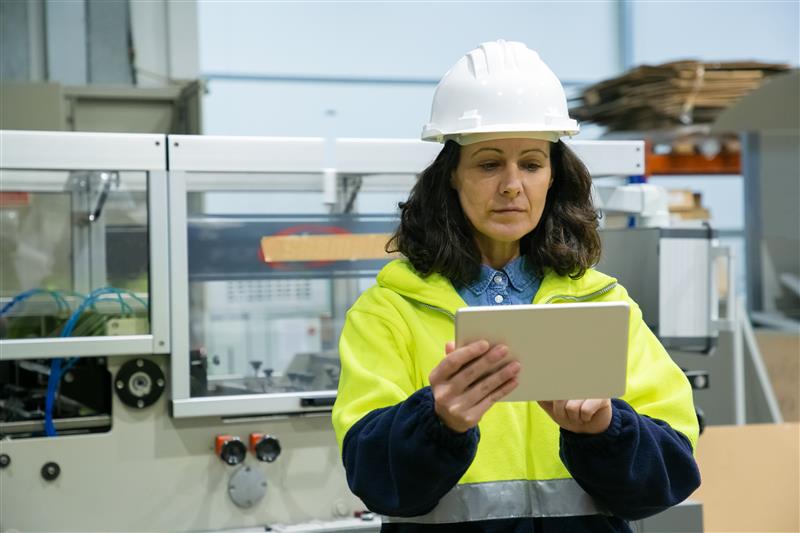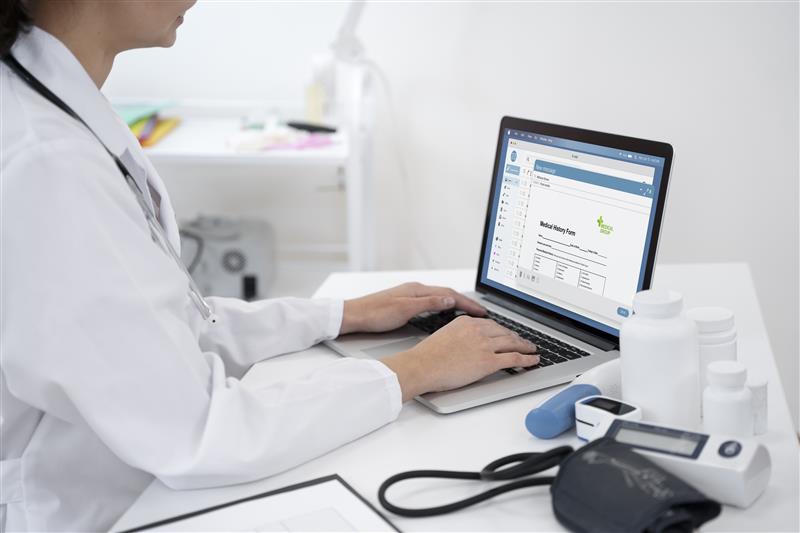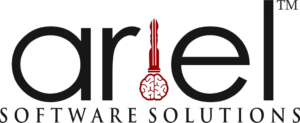
In the fast-moving world of manufacturing, precision and efficiency are non-negotiable. Yet, despite technological advancements, many factories still rely on outdated manual processes for data entry, inventory management, and shipment tracking. One seemingly minor error, such as misreading a shipment label, can trigger a chain reaction of supply chain delays, production bottlenecks, and financial losses. This is where OCR in industrial automation becomes a game-changer, addressing these inefficiencies and minimizing human errors.
Imagine this scenario: A manufacturing plant eagerly awaits a shipment of crucial raw materials. Due to a simple manual data entry mistake, the factory receives the wrong materials, bringing production to a halt. Workers scramble to correct the error, wasting valuable time and resources. Meanwhile, customer orders are delayed, contracts are jeopardized, and reputational damage follows.
By automating the reading and processing of shipment labels, barcodes, and invoices, OCR in industrial automation eliminates errors, speeds up operations, and ensures seamless supply chain management. Furthermore, OCR plays a crucial role in factory automation, enabling manufacturers to streamline their processes, reduce dependency on manual labor, and enhance overall efficiency.
OCR technology has been revolutionizing industries beyond manufacturing. Learn more about its impact on data extraction in our detailed blog post: “The Silent Revolution: How Optical Character Recognition Technology Transforms Data Extraction.”
The Cost of Manual Errors in Manufacturing
Mistakes in shipment labeling and manual data entry may seem minor, but they can have far-reaching consequences. The manufacturing industry relies on just-in-time inventory management, where any delay or inaccuracy disrupts the entire supply chain.
- Financial Losses from Misdirected Shipments
When the wrong materials are received, manufacturers face additional shipping costs, production downtime, and potential penalties for late deliveries. A single misread barcode can result in thousands of dollars lost due to wasted labor and unplanned procurement expenses. Industrial automation solutions, including OCR, help mitigate such risks by ensuring precision in shipment tracking.
- Operational Inefficiencies and Downtime
Workers manually entering shipment codes waste valuable hours that could be better utilized elsewhere. If a factory halts production due to a labeling error, the lost productivity extends beyond one order, it affects multiple departments and delays subsequent processes. Factory automation, powered by OCR and AI-driven systems, can significantly reduce downtime and improve overall efficiency.
- Customer Dissatisfaction and Reputational Damage
Manufacturers operate in a competitive landscape where reliability is paramount. Late deliveries due to incorrect shipments lead to unsatisfied customers, potential contract losses, and long-term reputational damage. Implementing factory automation strategies, including OCR-powered quality checks, ensures smoother operations and consistent product delivery.
- Compliance and Regulatory Risks
Many industries have strict regulatory requirements regarding material handling and product specifications. Misreading shipment labels can result in non-compliance, leading to hefty fines or legal consequences. Industrial automation helps manufacturers adhere to compliance standards by reducing human errors in documentation and tracking.
How OCR Transforms Supply Chain Efficiency
OCR technology automates and streamlines data capture, ensuring that every shipment label, barcode, or invoice is processed accurately and efficiently. Here’s how it directly benefits manufacturing operations:
- Accurate and Instant Barcode Scanning
Instead of relying on human input, OCR-powered systems scan barcodes in milliseconds, eliminating the risk of typos or misinterpretations. This ensures that the materials received match the factory’s production requirements. Factory automation relies on such technologies to enhance speed and accuracy in logistics.
- Seamless Integration with ERP and Inventory Systems
OCR integrates directly with enterprise resource planning (ERP) systems such as SAP and Microsoft Dynamics 365, automating stock updates, purchase order verification, and shipment tracking. By eliminating manual data entry, OCR reduces human errors and ensures real-time synchronization between production lines and inventory management software. Industrial automation solutions powered by OCR enhance ERP functionalities, enabling manufacturers to streamline procurement, optimize resource planning, and maintain seamless supply chain operations.
- Faster Processing and Reduced Labor Costs
By eliminating manual data entry, OCR reduces the time workers spend on administrative tasks, allowing them to focus on core production activities. This results in a more streamlined workflow and lower labor costs. Factory automation frameworks leverage OCR to ensure that automated processing lines operate with minimal human intervention.
- Error Detection and Automated Corrections
Advanced OCR solutions leverage AI to cross-check shipment details against purchase orders, flagging discrepancies before materials enter production. This proactive approach prevents costly mistakes from escalating. Industrial automation platforms incorporate such intelligent verification systems to maintain efficiency and accuracy.
- Enhanced Supply Chain Visibility
Real-time data capture through OCR provides manufacturers with complete visibility of their supply chain. Managers can track shipments, monitor inventory levels, and respond to potential disruptions before they impact production. Factory automation enhances these capabilities by integrating OCR with predictive analytics and AI-driven decision-making.
Real-World Impact: How OCR Prevented a Major Manufacturing Disruption
A leading automotive manufacturer experienced frequent production delays due to mislabeled shipments. Workers manually entered supplier information, often making small but critical errors that led to incorrect parts arriving at assembly lines. These mistakes resulted in wasted resources, delays, and customer dissatisfaction.
After implementing OCR, the company saw immediate improvements. Barcode scanning replaced manual input, reducing shipment errors by over 90%. Production timelines stabilized, and customer orders were fulfilled on time. The automated system also provided real-time tracking, allowing managers to make data-driven decisions and optimize inventory levels. This is a testament to the power of industrial automation in eliminating inefficiencies and enhancing operational accuracy.
The Future of Manufacturing: Smart Automation with OCR
As manufacturing moves toward greater automation, OCR will play a vital role in enhancing supply chain accuracy and efficiency. Combined with AI and machine learning, future OCR solutions will offer predictive analytics, helping manufacturers anticipate supply chain disruptions before they occur. Industrial automation and factory automation technologies will continue to evolve, creating smarter and more self-sufficient production environments.
With the adoption of OCR, businesses can eliminate costly manual errors, streamline operations, and maintain a competitive edge in an increasingly digital world.
Implement OCR for Smarter, Error-Free Manufacturing

If your manufacturing operations still rely on manual data entry for shipment processing, it’s time to rethink your approach. OCR technology offers a proven solution to reduce errors, save costs, and improve supply chain efficiency.
At Ariel Software Solutions, we provide advanced OCR-powered automation tools designed to optimize manufacturing workflows. Our solutions ensure accuracy, speed, and seamless integration with your existing systems. As leaders in industrial automation, we help businesses transition to smarter, more efficient factory automation solutions.
Enhance your manufacturing efficiency today. Contact us to learn how OCR can transform your operations.
Frequently Asked Questions: FAQ
1. What is Optical Character Recognition (OCR) in manufacturing?
OCR is a technology that converts printed or handwritten text into digital data. In manufacturing, OCR automates data extraction from shipment labels, barcodes, and invoices, reducing manual errors and improving supply chain efficiency.
2. How does OCR help prevent supply chain errors?
By scanning and processing shipment details automatically, OCR eliminates the risk of manual data entry mistakes, ensuring that factories receive the correct materials and preventing costly delays.
3. Can OCR integrate with existing ERP systems?
Yes, OCR integrates seamlessly with ERP platforms like SAP and Microsoft Dynamics 365, enabling real-time data synchronization for inventory management, procurement, and shipment tracking.
4. How does OCR improve factory automation?
OCR enhances factory automation by streamlining logistics, verifying shipment details instantly, and reducing the need for manual labor. This leads to improved production efficiency and lower operational costs.
5. Does OCR help with regulatory compliance in manufacturing?
Yes, OCR ensures accurate documentation of shipments and materials, helping manufacturers meet industry compliance standards and avoid regulatory fines.
6. Is OCR suitable for small and medium-sized manufacturers?
Absolutely. OCR technology is scalable and can benefit manufacturers of all sizes by improving efficiency, reducing errors, and enhancing automation.
7. How can I implement OCR in my manufacturing operations?
Ariel Software Solutions provides advanced OCR-powered automation tools designed for seamless integration with existing manufacturing systems. Contact us to learn how OCR can optimize your operations.




